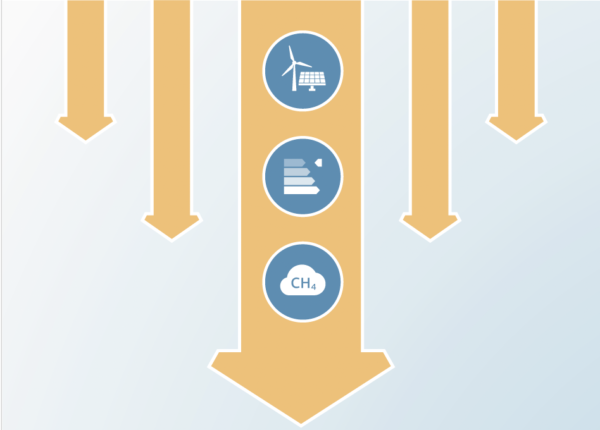The role of northern forests in limiting warming to 1.5°C
Authors

Widespread unsustainable forest management practices combined with increasing climate impacts in the northern hemisphere have seen the sink provided by forests in the region declining in recent years. As the world’s third largest carbon sink on land, this trend must be reversed if we are to reach our climate goals.
This study’s analysis of 1.5°C-compatible pathways shows that the most important land-based mitigation action for northern forests is to halt deforestation by 2030, especially in primary forests. The models also indicate that afforestation can play a role in expanding the northern forest carbon sink, but this must be carefully balanced with food security and biodiversity concerns.
The land-based carbon sink cannot compensate for the vast majority of CO₂ emitted from burning fossil fuels. In 1.5ºC aligned pathways, over 90% of the emissions reductions needed by 2050 in northern forest regions comes from transitioning away from fossil fuels in the energy system and ending deforestation. However, expanding the land sink could contribute a not insignificant 6% of the reductions needed by 2050.
Limiting warming to 1.5°C therefore requires phasing out fossil fuels and ending deforestation as the priority actions, with maintaining and expanding the carbon sink as a complementary measure. To make this expansion effective, efforts should focus on building resilient forest ecosystems and reversing the negative impacts caused by deforestation and unsustainable forest management.
The pathways assessed indicate that, if deforestation is ended and the existing sink preserved, the direct northern forests carbon sink could range from 0.23 to 0.68 GtCO₂ per year by 2030 and 0.3 to 1.6 GtCO₂ per year by 2050.
Modelled pathways that limit warming to 1.5°C account for the direct emissions or sinks from human-induced activities. However, the national greenhouse gas inventories that governments use to report emissions to the UNFCCC also account for indirect sinks not directly attributable to humans (the extra sink from plant growth spurred by higher levels of CO2 in the atmosphere has a particularly large effect). They also consider the carbon fluxes across a broader area of land compared to modelled pathways. As a result, national inventories assume that the global land system is a net sink, whereas the models suggest it is currently a net source. The difference between these two accounting systems is roughly equivalent to the USA’s CO2 emissions last year.
This discrepancy may lead northern forest countries – some of the wealthiest in the world – to believe they can burn more fossil fuels than the 1.5°C limit allows. A study indicates that when 1.5°C pathways are adjusted to align with countries’ national greenhouse gas inventory system, the world reaches net zero CO2 five years earlier with 15% lower cumulative CO₂ emissions compared to when the model-based accounting system is used.
While afforestation can play a role in achieving our climate goals, it has sustainability and feasibility limitations. The international community should take care not to over rely on assumptions about what their future carbon sinks can achieve, but act to protect their present forest ecosystems and their ability to store carbon from the atmosphere.
Restoration efforts are vital for recovering lost carbon sinks, primarily through reforesting fragmented areas and supporting the growth of secondary forests. For example, restoring managed plantations in the EU to resemble mature primary forests could sequester 0.31 GtCO₂ per year over the next 150 years, through both direct and indirect sequestration. This is greater than the EU’s current annual carbon sink.
Unsustainable forest management practices, including clear-cut logging and intensive harvesting, are common practice in the region and are negatively affecting carbon storage capacity and resilience to future climate shocks. Extending harvest rotation cycles and other alternative forest management practices can help recover carbon sinks, maintain carbon stocks in soils and peatland, and support soil health and biodiversity.
Recommendations:
- Phase out fossil fuels: transition away from fossil fuel use, making steep and rapid cuts this decade in line with the 1.5°C warming limit.
- Protection: Halt all deforestation by 2030, protect primary forests, and implement forest management practices aimed at enhancing resilience.
- Restoration: Reforest fragmented areas and support the regeneration of secondary forests to recover carbon sinks lost to poor forest management.
- Afforestation: Implement afforestation with a focus on native species diversity to support biodiversity while minimising trade-offs with food security.
Northern forests are critical in the race to net zero CO₂ by mid-century. Protecting and restoring these forests, alongside steep and rapid reductions in fossil fuel emissions, is essential both to mitigating emissions and to supporting forest ecosystem services and biodiversity. There needs to be immediate and concerted action over this critical decade and beyond to protect the existing northern forest carbon sink, enhance the health and resilience of northern forests and ensure their continued role on the path to limiting warming to 1.5°C.













